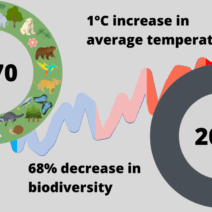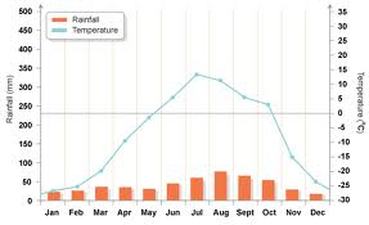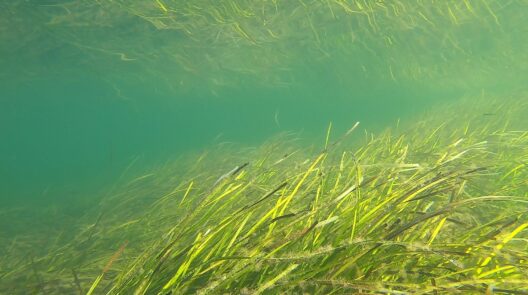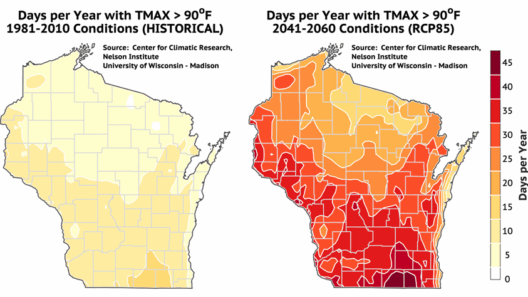Deciduous forests are striking landscapes that embody the essence of change, particularly through their remarkable seasonal transformations. But what exactly characterizes the climate of a deciduous forest, and how does it tie into the cycles of nature that we can observe each year? These ecosystems thrive in regions characterized by a temperate climate, which presents a fascinating interplay of four distinct seasons. Each season carries unique attributes that affect the flora, fauna, and indeed the atmosphere of these vibrant habitats.
The deciduous forest climate is largely influenced by its geographical location, typically found between the polar regions and the tropics. These forests receive significant amounts of rainfall—about 30 to 60 inches annually—distributed relatively evenly throughout the year, although certain months may experience more precipitation. This consistent moisture is essential for the survival of the diverse species that call these forests home. But how does this regular rain contribute to the kaleidoscope of colors we associate with autumn?
Spring heralds a time of renewal and rejuvenation. As temperatures begin to rise and the last vestiges of winter melt away, deciduous trees—such as oaks, maples, and birches—commence their growing cycle. Buds burst forth, unfurling into lush foliage, and the forest floor awakens, blanketed in a tapestry of wildflowers, ferns, and fresh green grass. Photography enthusiasts and nature lovers alike often flock to these forests at this time, dazzled by the invigorating scent of new life and the visual spectacle it presents. The climate during spring features mild temperatures, typically ranging from 50°F to 70°F, accompanied by increased humidity that supports photosynthesis and growth.
As spring gracefully transitions into summer, the atmosphere becomes increasingly warm and humid. Temperatures can soar, reaching an average of 70°F to 85°F. This season triggers a growth spurt in both trees and underbrush, culminating in a dense canopy that filters sunlight and creates a unique microenvironment below. With ample sunlight and water, the immersion into this green realm during summer months can transport one to a sanctuary, densely populated with wildlife. However, this abundance can present challenges related to competition among species and the spread of pests that thrive in such conditions. Is it possible, in this idyllic setting, that climate change could disrupt this delicate balance?
Autumn soon approaches, ushering in one of the most mesmerizing spectacles found in nature. As temperatures begin to dip back down to around 40°F to 65°F, the leaves of deciduous trees undergo a stunning transformation. Chlorophyll, the pigment responsible for the green hue, begins to break down, revealing brilliant hues of red, orange, and yellow. This fiery display is not merely a visual delight; it signifies the trees preparing for winter dormancy. As the days grow shorter, trees allocate resources away from leaf production, conserving energy for the colder months ahead. The shedding of leaves is not an act of despair, but rather an evolutionary strategy. What might we learn from this grand design—a reminder of the cyclical nature of life and death?
Finally, winter cloaks the deciduous forest in serene stillness, with temperatures often plummeting below freezing. Snow accumulates, blanketing the ground and creating a habitat that many creatures adapt to confront. While many trees remain bare, the forest is alive in a different way. Animal behaviors adapt; certain species hibernate, while others, such as deer, forage through the snow for sustenance. The forest, although appearing dormant, is teeming with life and is preparing for the inevitable return of spring. This contrasts starkly with the vibrant life of summer and autumn, emphasizing the adaptability inherent in both plants and animals. The question arises: Can we adequately appreciate the lessons that these seasonal cycles offer about resilience and perseverance?
The climate of the deciduous forest is more than just a series of weather patterns; it embodies an intricate dance between flora and fauna, all moving in synchronization with the rhythms of the Earth. However, the impact of climate change looms over these ecosystems, bringing with it a plethora of challenges. Increased temperatures, unpredictable weather patterns, and changing precipitation rates threaten not only the trees but also the wildlife that depends on them for sustenance. This reality fosters a sense of urgency in addressing climate change, calling for proactive measures to protect these enchanting environments.
In conclusion, deciduous forests encapsulate the beauty of four seasons, each contributing to a dynamic climate that fosters life and renewal. From the bud-laden branches of spring to the muffled silence of winter, these forests are a testament to the resilience of nature. Yet, they also challenge us to reflect upon our role in their preservation. As stewards of the Earth, we are tasked with ensuring that these seasonal cycles continue to thrive for generations to come. How will we rise to the occasion to combat climate change and protect the rich biodiversity of our deciduous forests? The responsibility lies with us, and the urgency is now.








